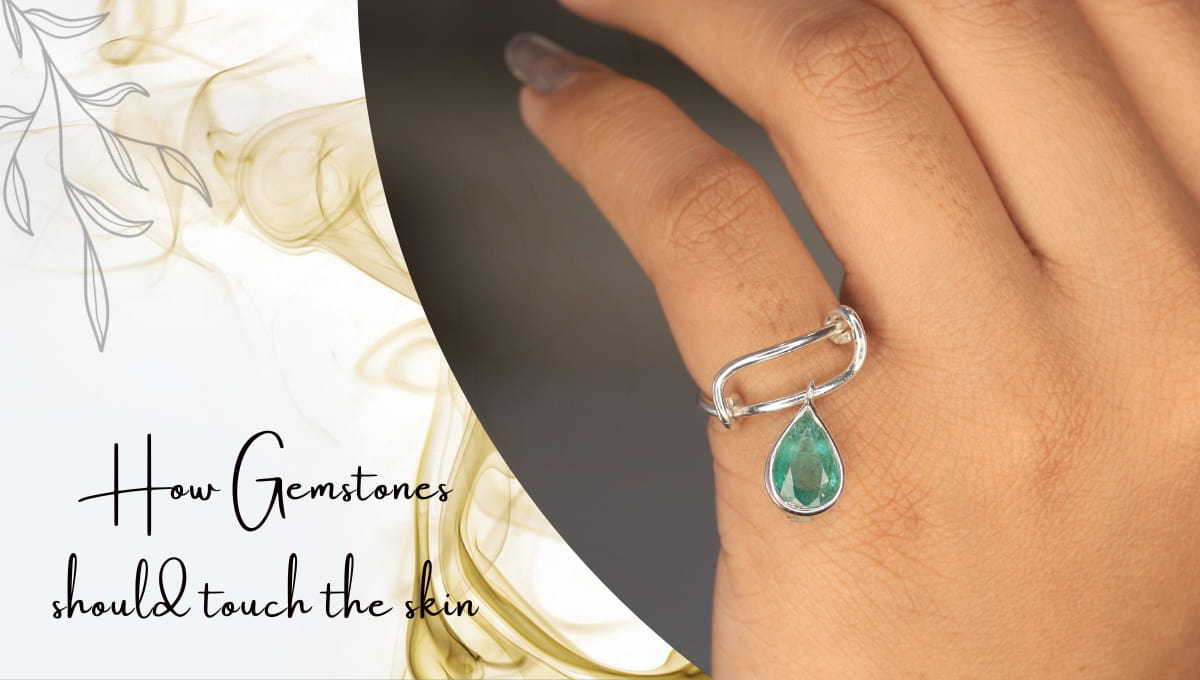There are only a handful of entities in this world that are as mysterious and magical as gemstones. Historically and Astrologically, gemstones are of paramount importance with monumental implications in umpteen industry verticals. Gemstones are primarily used for two purposes by individuals no matter at which corner of the world they reside; to use as embellishment and to treat problems associated with different walks of life.
We all know that gemstones have to be purified and activated first in order to elicit the desired benefits from them. However, there is a catch! Gemstones can only function properly when they touch the skin of a wearer. Yes, it is true that no matter how formidable and valuable a gemstone is, it cannot function unless it touches the skin in a proper manner. Now, the question that arises here is how gemstones should touch the skin properly. To answer this perennially lingering question, we have carved a comprehensive blog post that educates every gemstone wearer about how gemstones should touch skin a proper way and answers the question “Can wearing gemstones that touch the skin provide additional benefits?”.
Table of Contents
Different Ways to Ensure Gemstones Touch Your Skin
Various vital factors come into action when it comes to gemstones touching the skin perfectly. From the selection of a gemstone to the setting of jewelry, skin sensitivity, and thickness of the finger on which the gemstone would be worn, every minor to major aspect matters a lot. Below, we have jotted down different factors you must keep in mind in order to ensure a gemstone touches your skin perfectly.
Choose The Right Gemstones
- Always go for harder and more durable gems that can withstand daily wear such as diamonds, blue sapphires, topaz, ruby gemstones, and quartz that have high ratings on the Mohs scale of hardness. Softer stones like pearls, opals, turquoise, etc. may get damaged, hence, not ideal for some settings type.
- Make sure to avoid porous gems like turquoise and opal that can absorb skin oils, sweat, and perfumes which may discolor the stone and make it no ideal to embrace for a long time.
- Stay away from any gems with toxins like arsenic or lead that could potentially leach onto the skin. Do research on the stone’s chemical composition beforehand instead of showing hastiness to rope in a gemstone that may damage your skin permanently.
Proper Setting Is Key
- Prong and bezel settings that protect the entire surface of the gem are best for maximum durability. The chances of gemstone damage in these settings are minimal and enhance the lifespan of gemstone jewelry.
- flush settings like gypsy ring mounts leave gem surfaces exposed so they can get scratched, chipped, or fall out easier than said. Avoid these for skin contact jewelry.
- Make sure stones are securely set by a reputable jeweler to prevent losing gems. A loose setting may result in the dislocation of gemstones and damage by hitting the harder surface
Also Read: – Powerful Gemstones That Can Be Worn Together
Care and Cleaning Pointers
- Take rings off before showering, swimming, working out, cleaning, or doing any hardcore activities to prevent damage from chemicals and forceful impacts.
- Clean gems regularly with a soft brush and mild soap to remove dirt, oils, perfumes, and skin products that can build up. Doing this will maintain the luster and glitter of the gemstones.
- Store pieces separately to prevent scratches from other jewelry. Use fabric lined boxes or dividers.
Give Your Skin a Break
- Don’t wear the same ring 24/7. Rotate pieces to allow skin to breathe and dry out. Wearing the same ring on the same finger may result in a tanning mark .
- Take rings off at night to prevent trapping moisture against the skin which can cause irritation.
- Every few days, give your fingers a rest from wearing any rings to promote circulation and skin health.
See a Dermatologist
- If skin becomes red, inflamed or irritated under or around gems, cease wearing and see a dermatologist to assess for allergic reaction. May need to switch to hypoallergenic metal.
Must Check: – Gemstones to Avoid Wearing Together

